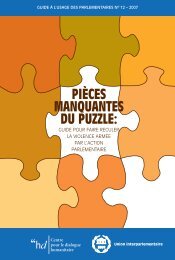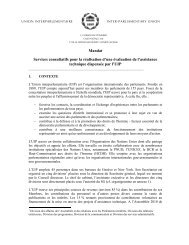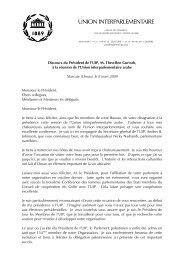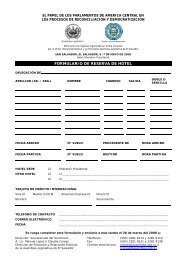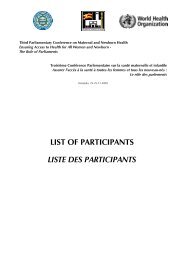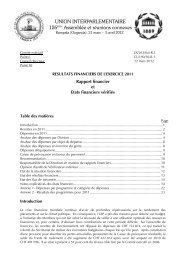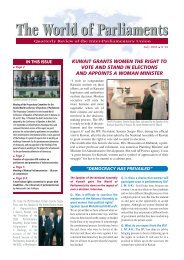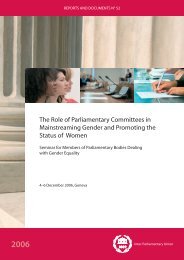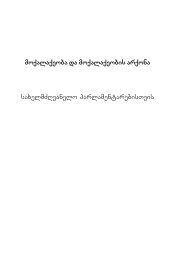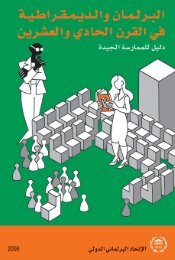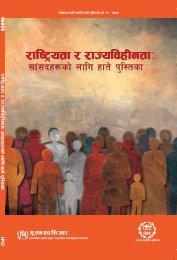MISSING PIECES - Inter-Parliamentary Union
MISSING PIECES - Inter-Parliamentary Union
MISSING PIECES - Inter-Parliamentary Union
Create successful ePaper yourself
Turn your PDF publications into a flip-book with our unique Google optimized e-Paper software.
<strong>MISSING</strong> <strong>PIECES</strong><br />
PUBLIC HEALTH AND THE SMALL ARMS ISSUE<br />
Violence is a learned behaviour. It can be unlearned, as can many<br />
public health problems . . . 8<br />
Public health provides a useful schema for understanding the types and<br />
timing of prevention approaches. This is relevant for policy development<br />
and preparedness to care for and rehabilitate survivors of gun violence,<br />
including:<br />
1. Primary prevention, which seeks to prevent a problem from occurring<br />
in the first place by building resilience in the populations and communities<br />
at large.<br />
2. Secondary prevention, which focuses on groups and individuals particularly<br />
likely to commit violence and aims to “keep these individuals from<br />
engaging in violent activity.” 9 Focus populations for secondary prevention<br />
might include, for example, young men in particularly violent settings. 10<br />
3. Tertiary prevention, which involves care of the disease or injury, and<br />
aims to minimise the worst aspects of the problem. For those surviving<br />
gun violence this often includes access to rehabilitation services, psychosocial<br />
support and trauma counselling, and access to employment.<br />
THE PHYSICAL AND MENTAL IMPACTS OF A GUN INJURY<br />
The severity of the injury—and the likelihood of permanent disability—<br />
are affected by the technical specifications of the ammunition used, for<br />
example, the bullet size, the type of tip (e.g. hollow-tipped, round nose),<br />
material (e.g. fragmenting), velocity and ‘flight pattern’. These factors influence<br />
bullet trajectory through the body and the subsequent damage to<br />
tissue, organs and bones. Bullets produce damage through laceration and<br />
crushing of tissue and bones in the direct path of the projectile, and via<br />
cavitation. When a bullet enters the body, a temporary vacuum is opened<br />
for a few thousandths of a second behind it, much like the vacuum created<br />
by a torpedo travelling under water. The greater the speed of the bullet,<br />
the larger the initial cavity: a large cavity may be 30 to 40 times the diameter<br />
of the bullet. After the bullet has gone through, a lasting cavity—or<br />
wound track—will remain. The pressure applied by the temporary cavity<br />
on surrounding tissues and organs provokes injuries far from the bullet<br />
path and therefore hard to detect, particularly to soft organs. It is also<br />
capable of fracturing bones several centimetres from the bullet track. 11<br />
64



